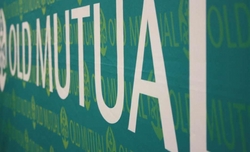
The Old Mutual African Agricultural Fund (Luxembourg) - SICAV holds an investment in the Futuregrowth Agri Fund 1 ("SA fund") which invests in South African farmland.
Old Mutual plans to increase Africa footprint by $1 billion
by Sarah Owermohle
The Old Mutual Investment Group has embarked on a capital-raising programme to increase its investment in sustainable projects on the continent by a further $1 billion over the next two years, it announced in a statement.
The company, which has more than $5.1 billion in pan-African investment beyond South Africa, is also the largest private sector investor in the continent with focus in the southern and eastern regions. The new tranche will help it grow its presence in West Africa, particularly Nigeria.
New agricultural investments in the pipeline include over $300 million in potential opportunities on the continent (excluding South Africa) which are currently being developed by its various investment teams.
Old Mutual Investment Group’s Director of Investment, Hywel George, said the investment focus is largely directed at sustainable projects around key development themes which go beyond listed equity, including alternative investment and fixed interest arenas such as low carbon energy, education, affordable housing, infrastructure real estate, agriculture and unlisted debt, diversified across countries, asset types, managers, and economic/inflation cycles.
“Over the past few years we have made a meaningful impact in the region by committing investment funding of around $500 million across this broad array of investments,” says George.
“By investing in schools, housing and infrastructure, we are not only supporting the development of the continent and making a lasting, positive impact on the social landscape, but also ensuring sustainable returns for investors. While private equity investments on the continent remain long term and illiquid, they are giving us net real returns of two per cent to three per cent above listed assets.”
George added that the world is finally awakening to the emergence of Africa and its exciting GDP as the next big regional growth story.
“China continues to expand its investment on the continent, while figures show there is also an increasing appetite for investment from the Middle Eastern economies, followed by Nordic countries, Asia, Latin America, the rest of Europe and the UK,” he said.
“This growing interest is being driven by significantly positive prospects for the continent over the next decade. It’s not merely a matter of resources, but also about providing the structures and systems required by the burgeoning growth in the middle class, which is now larger than that of India.
“The real story remains that of the developing consumer market across the continent, driving the growth of the retail sector. These consumers are increasingly accessing services in banking, insurance and mobile telecoms. Housing and infrastructure development also remains a key theme as well as the substantial opportunities in agriculture.”
Figures show that 10 years ago, there were 116 million people constituting the middle class in Africa. Currently, this figure stands at over 326 million people, about a third of the continent. This compares to about 54 per cent of the population in Asia and 77 per cent of the population in Latin America.
“The corporate, governance and political landscape has also transformed significantly for the better over the last decade,” says George.
“From a global viewpoint, Africa continues to offer high growth opportunities, while risk diminishes and fundamentals remain solid.”












